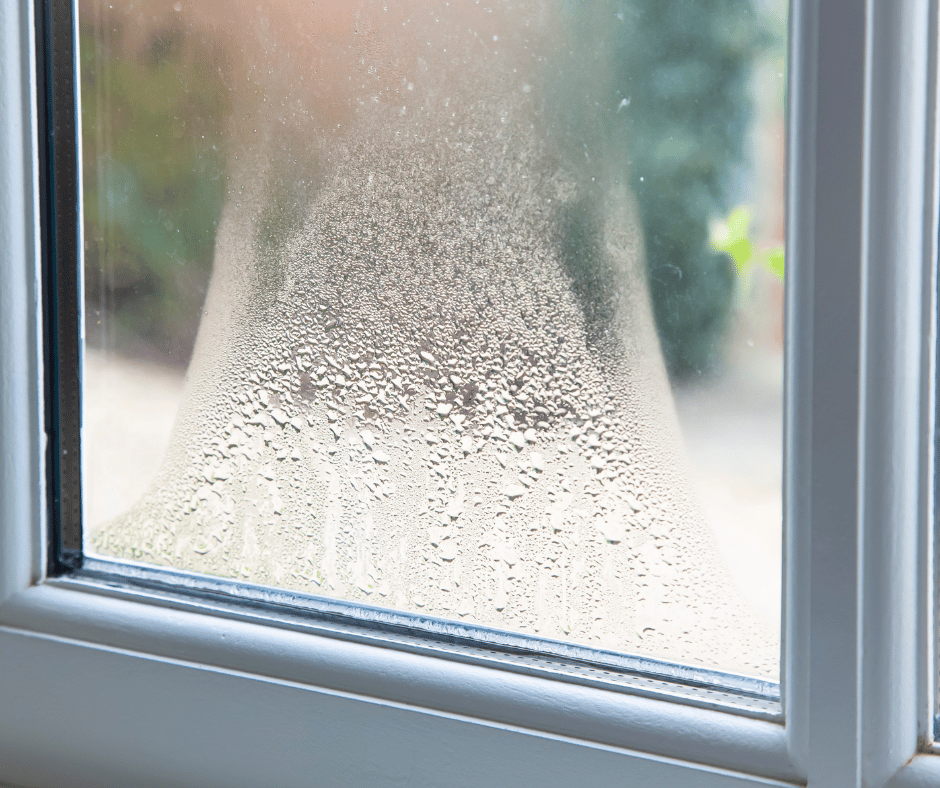Key Takeaways
- Recognise common signs of hinge issues like sagging, difficulty closing, or draughts to avoid long-term damage to your composite door.
- Adjusting composite door hinges is a simple DIY task, requiring basic tools such as an Allen key, screwdriver, and spirit level.
- Hinge adjustments involve three main aspects: height (vertical adjustment), compression (sealing the door), and lateral alignment (side-to-side positioning).
- Routine maintenance is key to preventing issues—regularly check for signs of misalignment, tighten screws, and lubricate hinges.
- Different hinge types require specific adjustments—understand whether you have flag, butt, or T hinges for best results.
- Avoid common mistakes like over-tightening screws, which can damage the door frame or leave screws too loose, causing misalignment.
- Seek professional help if necessary, especially if issues persist after adjustments or if the door or frame is warped.
Composite doors are an increasingly popular choice for homeowners due to their durability, security, and energy efficiency. However, like any door, without proper maintenance and up keep, composite doors can develop issues over time, particularly with their hinges.
Properly adjusting composite door hinges is essential for maintaining the door’s functionality and extending its lifespan. Whether your door is sagging, not closing properly, or catching on the frame, knowing how to adjust the hinges correctly can save you time, money, and the hassle of calling in a professional.
Composite door hinge adjustment is a relatively simple task that can be performed by most DIY enthusiasts. However, it’s crucial to understand the process to avoid common pitfalls that could lead to further issues.
In this article, we’re going to walk you through each step of the adjustment process, from identifying when an adjustment is needed to performing the final checks after the adjustment. We’ll also discuss when it might be best to seek professional help, ensuring that your composite door continues to function smoothly for years to come.
What is Composite Door Hinge Adjustment?
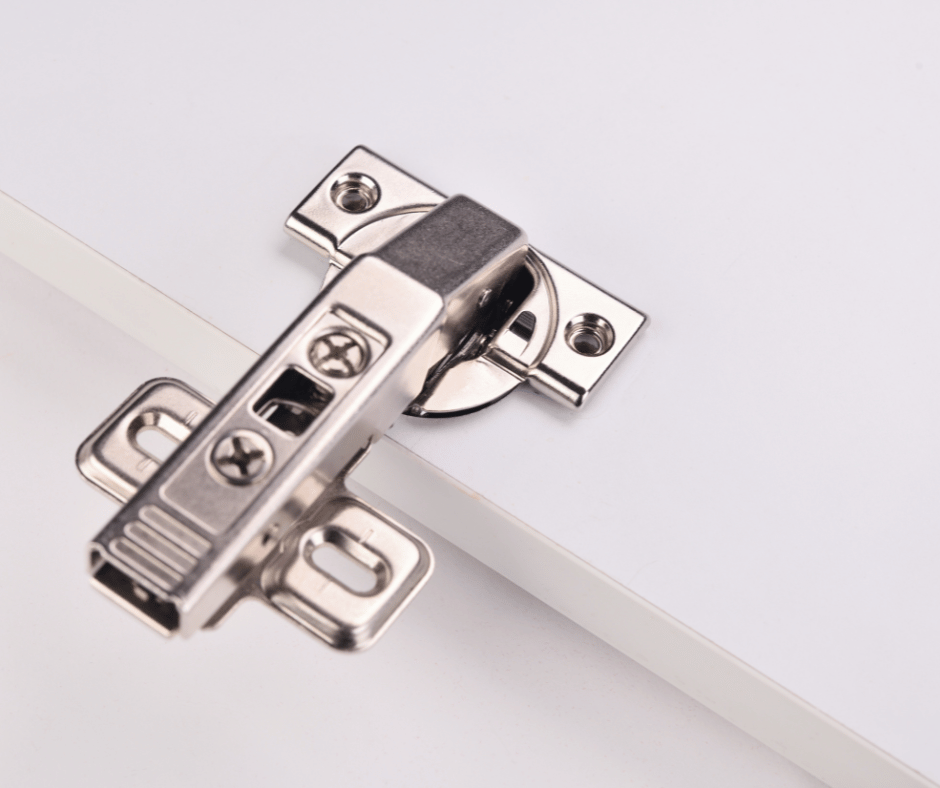
Composite door hinge adjustment is the process of fine-tuning the hinges that hold your door in place, ensuring it is perfectly aligned with the frame. Over time, due to factors like frequent use, changes in temperature, and the natural settling of a house, a composite door can shift slightly, leading to problems with its alignment.
This misalignment can cause the door to sag, scrape against the floor, or fail to close properly, compromising both its functionality and security.
Hinge adjustment involves altering the height, compression, and lateral alignment of the door to ensure it operates smoothly. Properly adjusted hinges are crucial for maintaining the door’s weatherproofing, security, and ease of use.
Common Issues That Require Hinge Adjustment
There are several common issues that may indicate the need for hinge adjustment on your composite door:
- Door Sagging: If your door appears to be sagging or uneven, it’s likely that the hinges have loosened or shifted over time. This can cause the door to drag on the floor, making it difficult to open and close.
- Difficulty Closing: If your door doesn’t latch properly or requires extra force to close, it may be misaligned. This issue is often caused by the door being slightly out of position, leading to problems with the latch meeting the strike plate correctly.
- Catching on the Frame: Doors that catch or scrape against the frame is another sign of misalignment. This can happen if the door has shifted sideways (laterally) or if the hinges are not holding the door at the correct angle.
- Draughts: If you notice draughts coming through your door, it may be due to an improper seal caused by misaligned hinges. Adjusting the compression of the door can help restore a tight seal, improving energy efficiency and comfort.
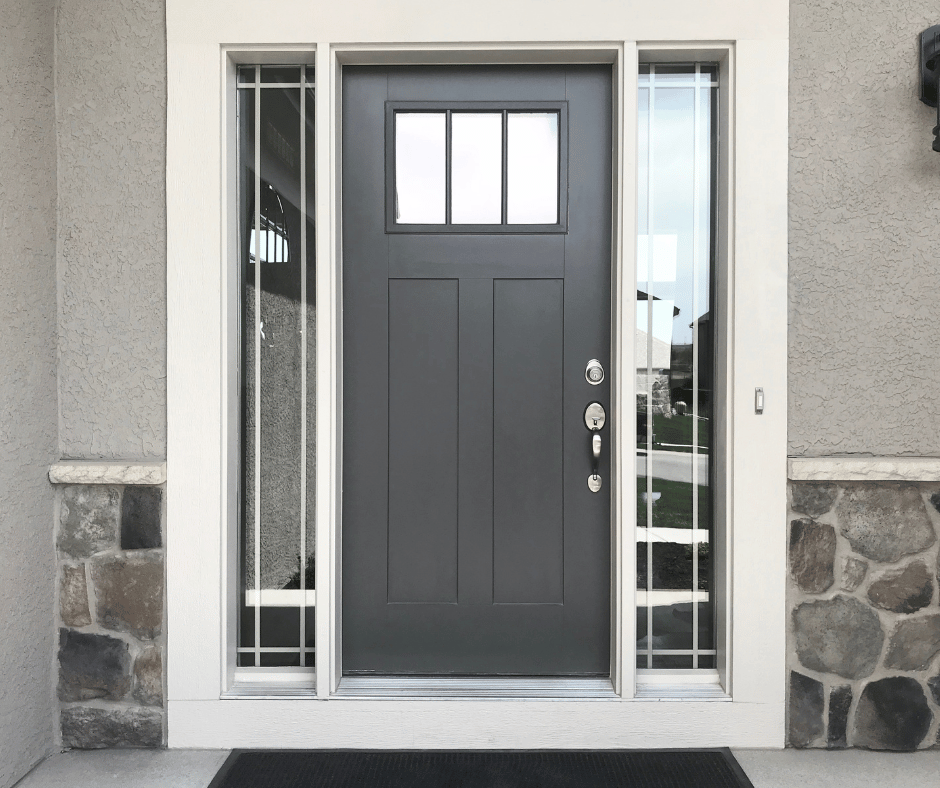
How to Check If Your Composite Door Needs Adjustment
Properly identifying whether your composite door requires hinge adjustment is the first step in ensuring it functions smoothly. Often, the signs are subtle, but knowing what to look for can help you catch issues early before they develop into more significant problems.
Signs of Misalignment
Several signs can indicate that your composite door needs adjustment. Here’s what to watch out for:
- Uneven Gaps: When a composite door is correctly aligned, the gaps between the door and the frame should be even all around. If you notice that the gap is wider at the top or bottom, or one side appears closer to the frame than the other, this is a clear sign that your door may need adjustment.
- Scraping Sounds: If you hear scraping sounds when opening or closing your door, it’s likely that the door is rubbing against the floor or the frame. This usually happens when the door sags due to the hinges becoming loose or misaligned.
- Difficulty Latching: A door that struggles to latch properly is often misaligned. If you find that you have to lift or push the door forcefully to get it to close, the hinges may need adjusting to bring the door back into alignment with the frame.
- Resistance When Closing: If the door feels resistant when you try to close it, or it doesn’t swing smoothly, this could indicate that the hinges are not holding the door correctly, and adjustment is necessary.
Recognising these signs early can help you avoid more extensive repairs and keep your door in top condition.
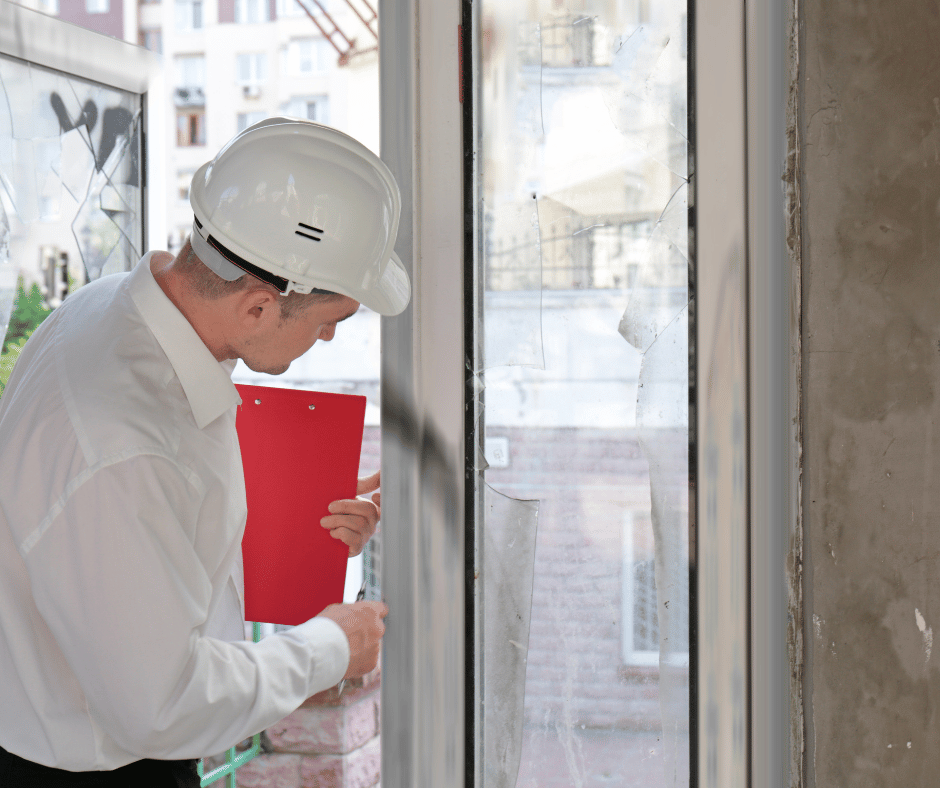
Performing a Quick Inspection
Before diving into hinge adjustments, it’s important to perform a quick inspection to confirm that your door is indeed misaligned and to identify the specific areas that need attention. Here’s a simple guide on how to do it:
- Visual Inspection: Start by visually inspecting the door from both inside and outside. Look at the gaps between the door and the frame. Are they consistent? Is the door sitting squarely in the frame? Check if the door is rubbing against the frame or floor at any point.
- Manual Check: Gently open and close the door, paying attention to any resistance, scraping, or unusual sounds. Also, try lifting the door slightly by the handle—if there’s noticeable movement, the hinges may be loose or need realignment.
- Use of a Spirit Level: For a more precise inspection, use a spirit level to check the vertical and horizontal alignment of the door. Place the level against the edges of the door and the frame to see if they are parallel. Any significant deviation can indicate that the door hinges need adjustment.
Tools You’ll Need for Composite Door Hinge Adjustment
Having the right tools on hand is essential for successfully adjusting your composite door hinges. Whether you’re a seasoned DIY enthusiast or a novice, making sure you’re well-prepared will make the process smoother and more efficient.
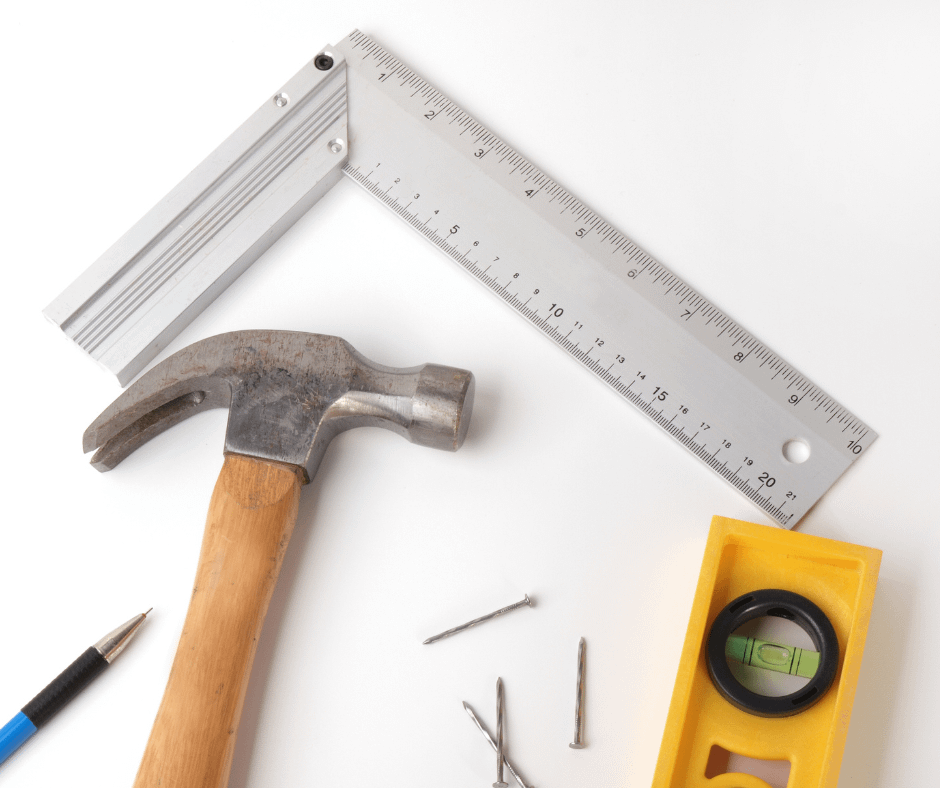
Essential Tools
Here’s a list of essential tools you’ll need to adjust your composite door hinges:
- Tape Measure: A tape measure is crucial for checking the gaps between the door and the frame to ensure even alignment. Accurate measurements are key to making precise adjustments.
- Screwdriver: Depending on the type of screws used in your door hinges, you’ll need either a flathead or Phillips screwdriver. This will be used to loosen or tighten the screws during the adjustment process.
- Spirit Level: A spirit level helps ensure that the door is perfectly vertical (plumb) and horizontal. It’s an indispensable tool for achieving accurate alignment.
- Hex/Allen Keys: Composite door hinges typically require Hex or Allen keys for adjustment. Ensure you have the correct sizes, usually 4mm and 5mm, to make the necessary adjustments to the hinge bolts.
Optional Tools
While the essential tools will cover most of your needs, a few optional tools can make the job easier:
- Hammer: A hammer can be useful for gently tapping the hinges or the door into position if needed. Use it cautiously to avoid damaging the door or frame.
- Lubricant: If your hinges are squeaky or stiff, a bit of lubricant can help them operate more smoothly. This can also prevent future wear and tear.
- Soft Cloth or Towel: Placing a soft cloth or towel under the door can protect your floor from scratches during the adjustment process.
Having these tools ready before you begin ensures that you won’t have to interrupt your work to find the right equipment, making the adjustment process more efficient and effective.
How to Adjust Composite Door Hinges: Step-by-Step
Adjusting composite door hinges may seem daunting at first, but with the right approach, it’s a task that most homeowners can handle. Follow this step-by-step guide to ensure your door is properly aligned and functioning smoothly.
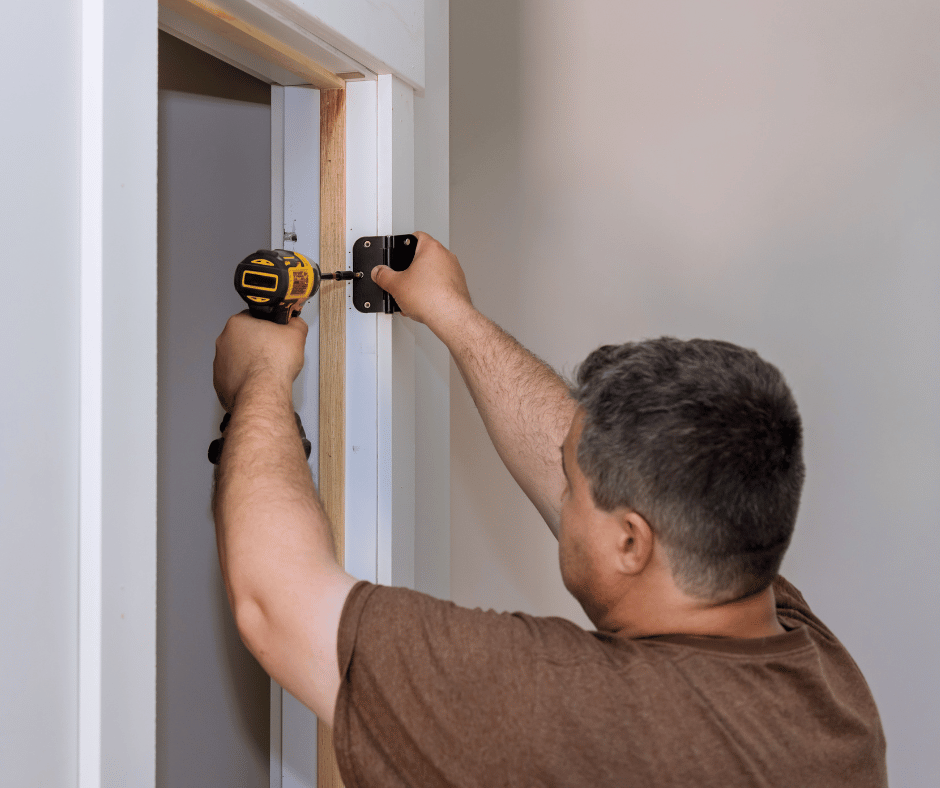
Step 1: Preparing for Adjustment
Before making any adjustments, it’s important to prepare adequately:
- Safety First: Ensure you’re working in a safe environment. Wear protective gloves if necessary, and make sure the area around the door is clear of any obstacles.
- Gather Your Tools: Have all your essential tools (tape measure, screwdriver, spirit level, Hex/Allen keys) within easy reach. This will save you time and keep the process smooth.
- Check the Manufacturer’s Instructions: If available, refer to your door’s manufacturer instructions for any specific guidelines on hinge adjustment. This can provide useful insights specific to your door model.
By taking the time to prepare, you’ll set yourself up for a successful adjustment. This step is crucial and should not be overlooked, especially for those new to DIY door repairs.
Step 2: Adjusting Hinge Height (Vertical Adjustment)
The first adjustment to consider is the height of the door, which controls how high or low the door sits in the frame. This is particularly important if your door is sagging or scraping the floor.
- Locate the Adjustment Screws: Most composite doors have adjustment screws on the hinge. These screws can be turned to raise or lower the door. Typically, a 5mm Allen key is used for this purpose.
- Adjust the Height: Insert the Allen key into the appropriate screw and turn it to raise or lower the door. Make small adjustments and check the door’s position after each turn.
- Check the Alignment: After adjusting, use the spirit level to ensure the door is sitting level in the frame. The door should be perfectly plumb without any tilt.
- Test the Door: Open and close the door a few times to see if it operates smoothly and clears the floor without scraping.
This step will correct any issues related to door height, ensuring that your door no longer drags on the floor or appears uneven.
Step 3: Adjusting the Door Compression (Compression Adjustment)

Compression adjustment is critical for ensuring your door seals tightly against the frame, which is essential for weatherproofing and energy efficiency.
- Locate the Compression Adjustment Screws: These are usually found on the side of the hinge and may require a 5mm Allen key.
- Adjust the Compression: Turning these screws will bring the door closer to or further from the frame. Adjust as needed to ensure the door fits snugly into the frame when closed, without leaving any gaps.
- Check the Seal: After adjustment, close the door and check for any draughts or light coming through. The door should seal tightly all around the frame.
- Test the Latch: Ensure that the door latches smoothly and securely after the compression adjustment.
Proper compression adjustment will help eliminate draughts and improve your home’s energy efficiency by ensuring a tight seal around the door.
Step 4: Adjusting the Door Alignment (Lateral Adjustment)
Lateral adjustment corrects any side-to-side misalignment, which is often the cause of a door catching on the frame or not closing properly.
- Locate the Lateral Adjustment Screws: These are typically on the hinge body and require a 4mm Allen key.
- Adjust the Alignment: Turn the screws to move the door left or right within the frame. Make small adjustments and frequently check the door’s position.
- Check for Clearance: Ensure the door no longer catches on the frame and that there’s an even gap all around the door.
- Final Test: Open and close the door to confirm that it swings freely and latches without any issues.
This adjustment will ensure that the door is perfectly centred within the frame, preventing any unnecessary friction or difficulty in closing.
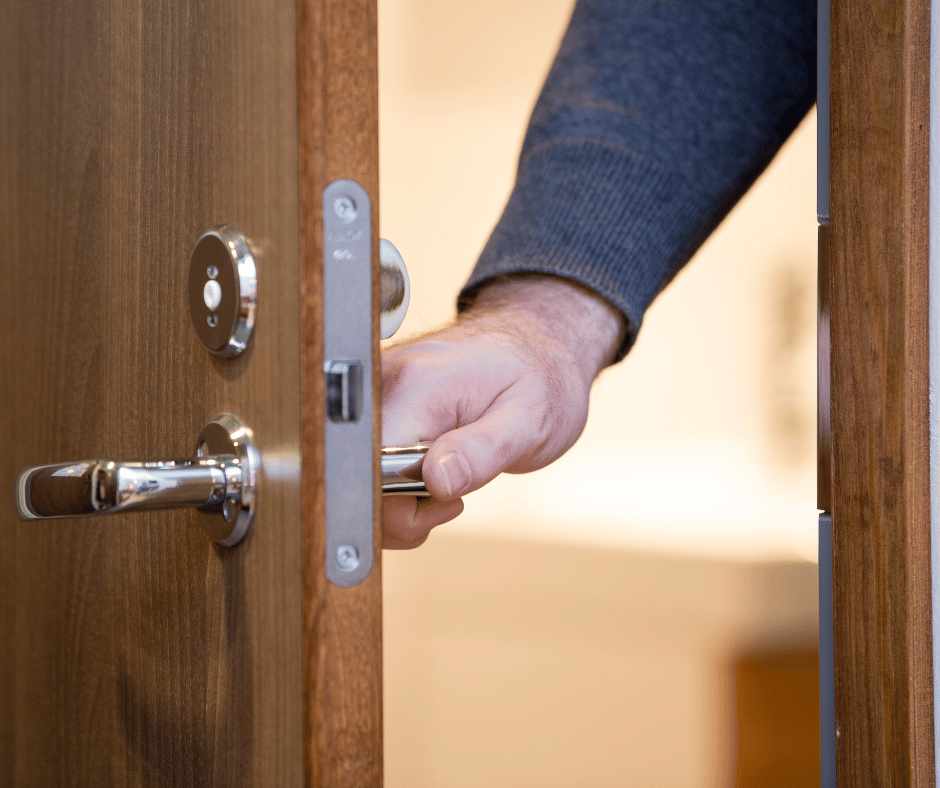
Step 5: Final Checks and Testing
After completing the adjustments, it’s essential to perform final checks to ensure everything is in order:
- Test the Door: Open and close the door several times to check for smooth operation. Make sure it latches properly and doesn’t scrape against the frame or floor.
- Inspect the Hinges: Ensure all screws are tight and the hinges are secure. There should be no wobbling or movement.
- Final Alignment Check: Use the spirit level to do a final check on the door’s alignment. The door should be perfectly aligned both vertically and horizontally.
- Check for Draughts: Stand near the closed door and feel for any draughts. If you notice any, you may need to revisit the compression adjustment.
These final checks will help ensure that your composite door is properly aligned and functioning as it should, providing both security and energy efficiency.
Troubleshooting Common Composite Door Hinge Issues
Even with careful adjustment, you might encounter some common issues that can arise with composite door hinges. Understanding these problems and knowing how to address them can save you time and ensure your door remains in optimal condition.
Why Does My Composite Door Keep Dropping?
One of the most frequent problems homeowners face is a composite door that keeps dropping. This issue is typically due to the hinges loosening over time, particularly if the door is heavy or frequently used.
Potential Causes:
- Loose Hinge Screws: Over time, the screws holding the hinges in place can work themselves loose, causing the door to sag or drop.
- Worn Hinges: If the hinges are old or of low quality, they may wear out, leading to a drop in the door’s height.
- Improper Initial Installation: If the door was not installed correctly from the start, it might gradually drop as the hinges struggle to bear the door’s weight.
Solutions:
- Tighten the Screws: Use a screwdriver or Allen key to tighten all the hinge screws. Ensure they are secure but be careful not to overtighten, as this could strip the screw holes.
- Replace Worn Hinges: If the hinges are worn out, it may be necessary to replace them with higher-quality ones designed to support the weight of a composite door.
- Re-adjust the Hinges: Follow the steps outlined in previously to re-adjust the hinges and lift the door back into the correct position.
Regularly checking and tightening the hinge screws can prevent the door from dropping and save you from more significant adjustments later.
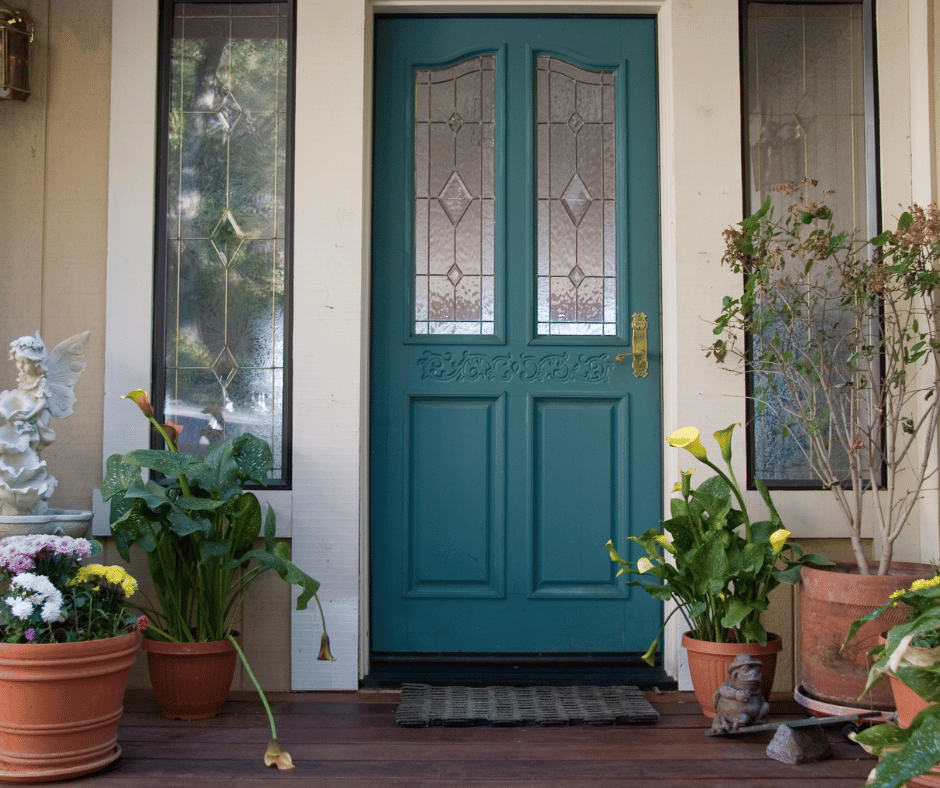
How to Fix a Draughty Composite Door
A draughty door can be more than just an annoyance—it can also lead to higher energy bills and reduced comfort in your home. Draughts around a composite door are often caused by improper sealing, which can usually be fixed with a simple hinge adjustment.
Potential Causes:
- Poor Compression: If the door is not tightly compressed against the frame, it can leave gaps where air can seep through.
- Misaligned Door: If the door is not properly aligned within the frame, it may not seal correctly, allowing draughts to enter.
Solutions:
- Adjust Compression: As discussed in earlier, adjusting the compression settings on your hinges can help ensure the door fits snugly against the frame, eliminating gaps that cause draughts.
- Check the Seal: After adjusting the hinges, inspect the door’s seal. If the seal is worn or damaged, consider replacing it to improve the door’s insulation.
What to Do If Your Door Still Doesn’t Close Properly
After making hinge adjustments, if your composite door still doesn’t close properly, there may be additional factors to consider:
- Latch Plate Misalignment: Sometimes, the problem isn’t with the hinges but with the latch plate. If the latch plate is not aligned with the door latch, the door will not close securely. Adjust the position of the latch plate so that the latch can engage fully. This may involve loosening the screws on the plate and repositioning it slightly.
- Solution: Warped Door or Frame: If the door or frame is warped, it may require professional attention to correct the issue. In extreme cases, replacing the door or sections of the frame may be necessary.
- Obstruction: Check that nothing is obstructing the door, such as debris in the hinge or latch mechanism. Clean the area around the hinges and latch to remove any dirt or debris that might be preventing the door from closing properly.
If these troubleshooting steps don’t fix the issue, it may be time to seek professional help to ensure your door is functioning as it should.
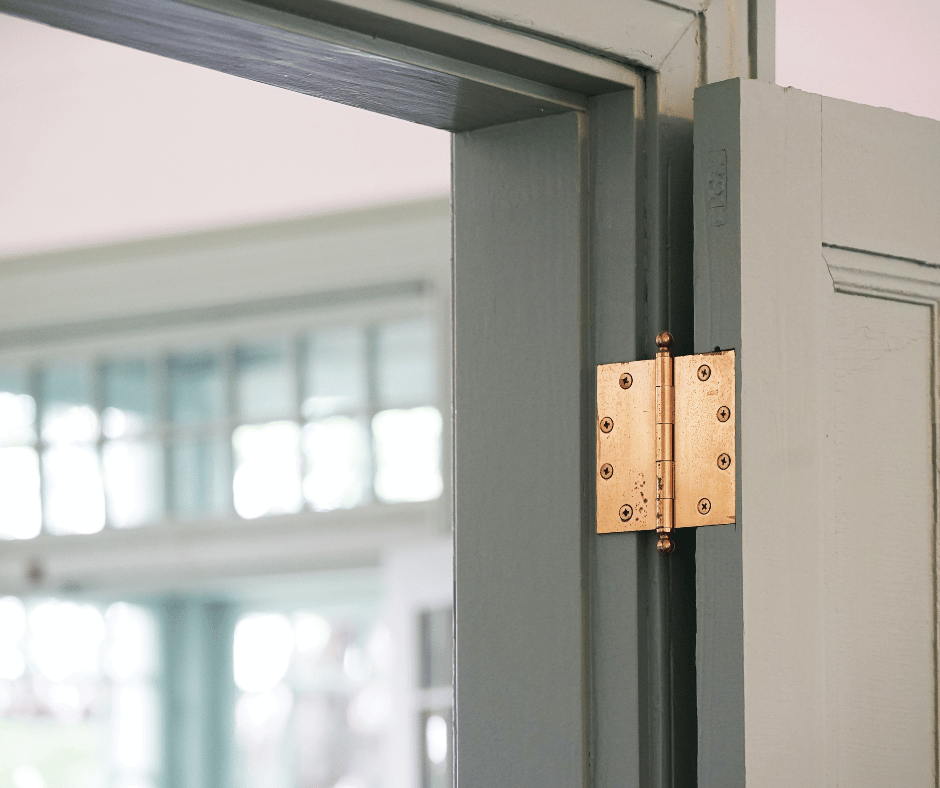
Maintenance Tips for Composite Door Hinges
Regular maintenance of your composite door hinges is crucial for ensuring long-term performance and preventing issues like sagging or misalignment. Here are some simple tips to keep your door and hinges in top condition.
Routine Hinge Maintenance
- Lubricate the Hinges: Applying a lubricant to your door hinges every few months can prevent squeaking and reduce wear. Use a silicone-based spray or a light machine oil, and wipe away any excess to avoid attracting dust.
- Check and Tighten Screws: Regularly inspect the hinge screws to ensure they remain tight. Loose screws can lead to misalignment and other door issues. Tighten them as necessary, but be careful not to overtighten.
- Clean the Hinges: Dirt and debris can accumulate in the hinge mechanisms, causing them to function less smoothly. Use a soft brush or cloth to clean around the hinges, removing any build-up that could impede movement.
- Inspect for Wear and Tear: Over time, even high-quality hinges can wear out. Periodically inspect the hinges for signs of damage or wear, such as rust or loose joints. If you notice any significant wear, consider replacing the hinges to avoid more extensive problems later.
How Often Should You Adjust Composite Door Hinges?
The frequency of hinge adjustments will depend on several factors, including how often the door is used, the weight of the door, and environmental conditions. However, as a general rule:
- Regular Use: If your composite door is used frequently, it’s a good idea to check and adjust the hinges every six months to a year. This will help keep the door properly aligned and prevent issues from developing.
- Signs of Misalignment: If you notice any signs of misalignment, such as the door not closing properly or scraping against the frame, adjust the hinges immediately to prevent further damage.
- Seasonal Changes: Temperature fluctuations can cause materials to expand and contract, potentially affecting door alignment. Checking the hinges at the beginning of each season can help maintain the door’s performance.
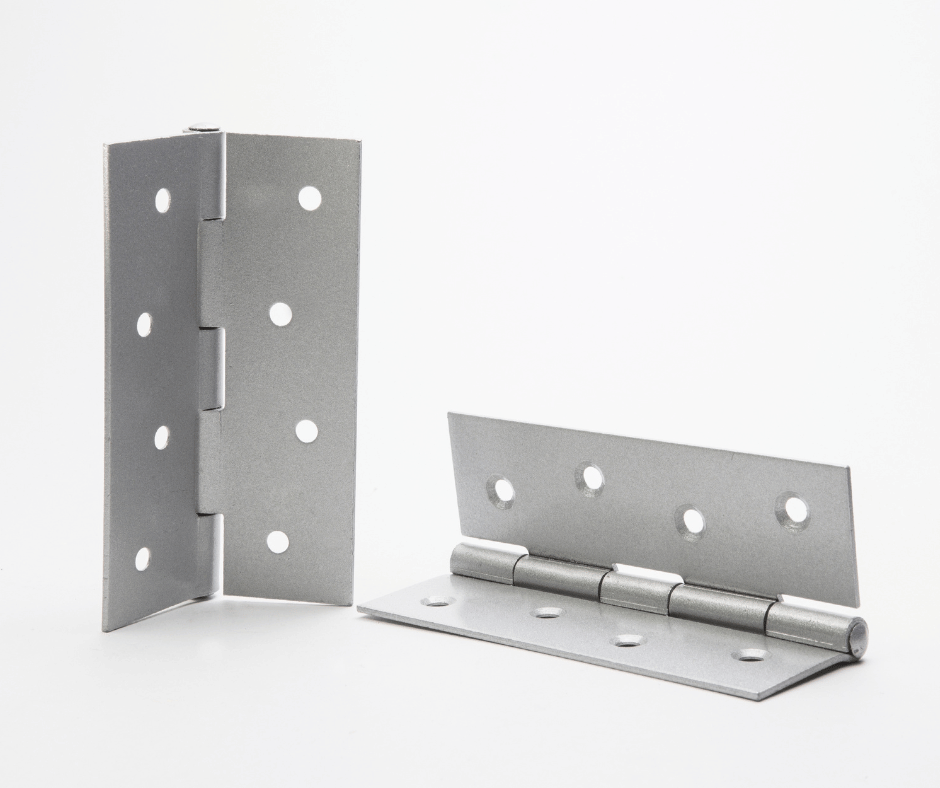
The different Types of Composite Door Hinges and Their Adjustments
Composite doors can be fitted with various types of hinges, each of which requires specific adjustment techniques. Understanding the type of hinge on your door is crucial to making the correct adjustments.
Flag hinges are commonly used on composite doors because of their strength and adjustability. These hinges allow for vertical, lateral, and compression adjustments, making them versatile and effective for maintaining proper door alignment. To adjust the vertical positioning of a door fitted with flag hinges, you would use the vertical adjustment screw, which raises or lowers the door as needed. This adjustment is particularly useful for correcting sagging or ensuring that the door clears the floor.
Lateral adjustment involves repositioning the door to ensure it is centred within the frame, preventing it from catching on the sides. Compression adjustment is done to ensure the door seals tightly against the frame, which is important for both weatherproofing and security.
Butt hinges, another common type used in composite doors, offer less adjustability compared to flag hinges. These hinges are typically found in older installations or on simpler door designs. Height adjustment with butt hinges generally requires shimming, which involves adding or removing thin materials behind the hinge to raise or lower the door. While some butt hinges allow for slight lateral adjustments by loosening the screws and shifting the hinge plate, these adjustments are usually more limited compared to what is possible with flag hinges.
T hinges, though less common in modern composite doors, are sometimes used for decorative purposes or on certain traditional door styles. These hinges tend to be more fixed, offering limited adjustability. Significant adjustments with T hinges often require rehanging the door. While minor adjustments might be possible by loosening and repositioning the hinge, this process is typically more challenging than with other types of hinges.
Understanding the type of hinge on your composite door and knowing how to adjust it properly will help you maintain the door’s functionality and appearance.
Common Mistakes to Avoid When Adjusting Composite Door Hinges
Adjusting composite door hinges might seem straightforward, but there are common mistakes that can lead to further issues. Avoiding these pitfalls will help you achieve the best results.
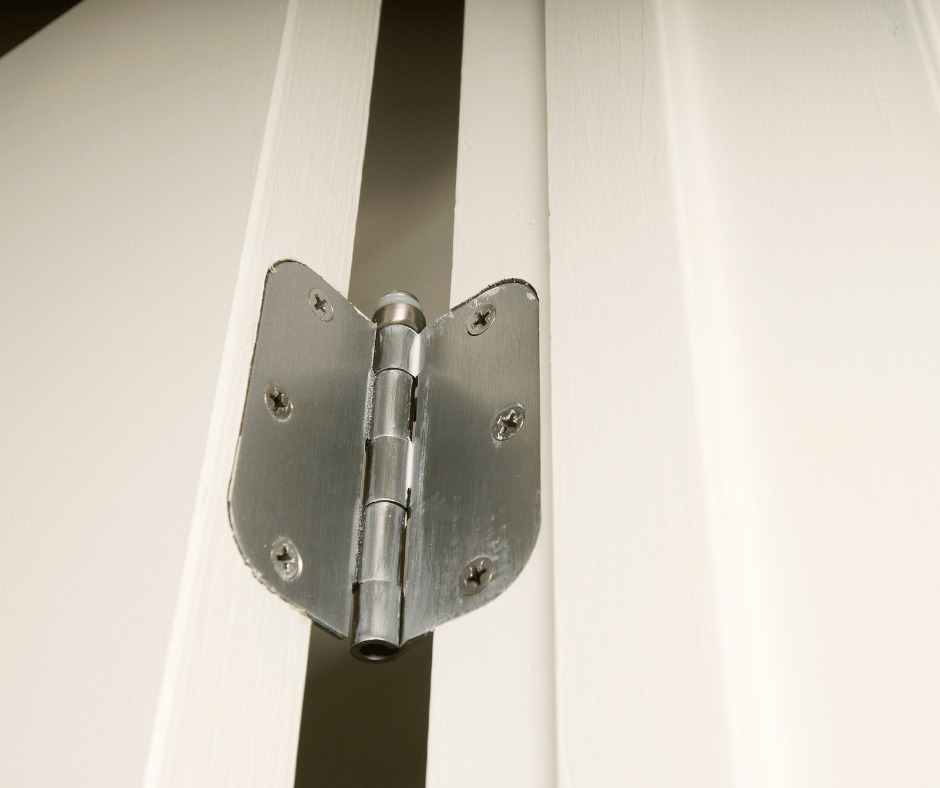
Over-Tightening or Under-Tightening Hinges
Tightening the hinge screws too much can strip the screw holes, weaken the hinge’s hold, or even crack the door frame. This can make the door less secure and harder to adjust in the future.
Solution: Tighten screws just enough to secure the hinge without applying excessive force. If the screws won’t hold, consider using longer screws or filling the holes with wood filler before re-inserting the screws.
On the other hand, leaving the screws too loose can cause the door to sag or become misaligned again shortly after adjustment.
Solution: Ensure screws are snug and secure, checking all hinges to maintain consistent pressure across the door.
Small issues, such as a slight misalignment or a minor draught, can quickly escalate into more significant problems if left unaddressed. A door that’s slightly off-kilter can lead to increased wear on the hinges, causing them to fail prematurely.
FAQs: How to Adjust Composite Door Hinges Like a Professional
When adjusting composite door hinges, you might run into a few problems along the way. Here are some of the most common questions we get;
Why does my composite door keep dropping?
A composite door that keeps dropping is usually due to the hinges loosening over time, especially if the door is heavy or frequently used. This can happen when the screws holding the hinges become loose, or if the hinges themselves are worn out. To fix this issue, you should first check the hinge screws and tighten them if they are loose. If the screws are secure and the problem persists, you may need to adjust the hinge height to lift the door back into position. In some cases, replacing worn hinges with higher-quality ones may be necessary to prevent the door from dropping again in the future.
How do you adjust PVC door hinges?
Adjusting PVC door hinges is a process similar to adjusting composite door hinges, though it may vary slightly depending on the hinge type. Most PVC doors use flag hinges, which allow for adjustments in three directions: vertical, lateral, and compression. To adjust the height, use an Allen key to turn the adjustment screw on the hinge to raise or lower the door. For lateral adjustments, adjust the screws on the side of the hinge to move the door left or right within the frame. Compression adjustments, which control how tightly the door fits against the frame, can be made by turning the compression screw to create a snug seal. Always make small adjustments and test the door’s operation after each change to ensure proper alignment.
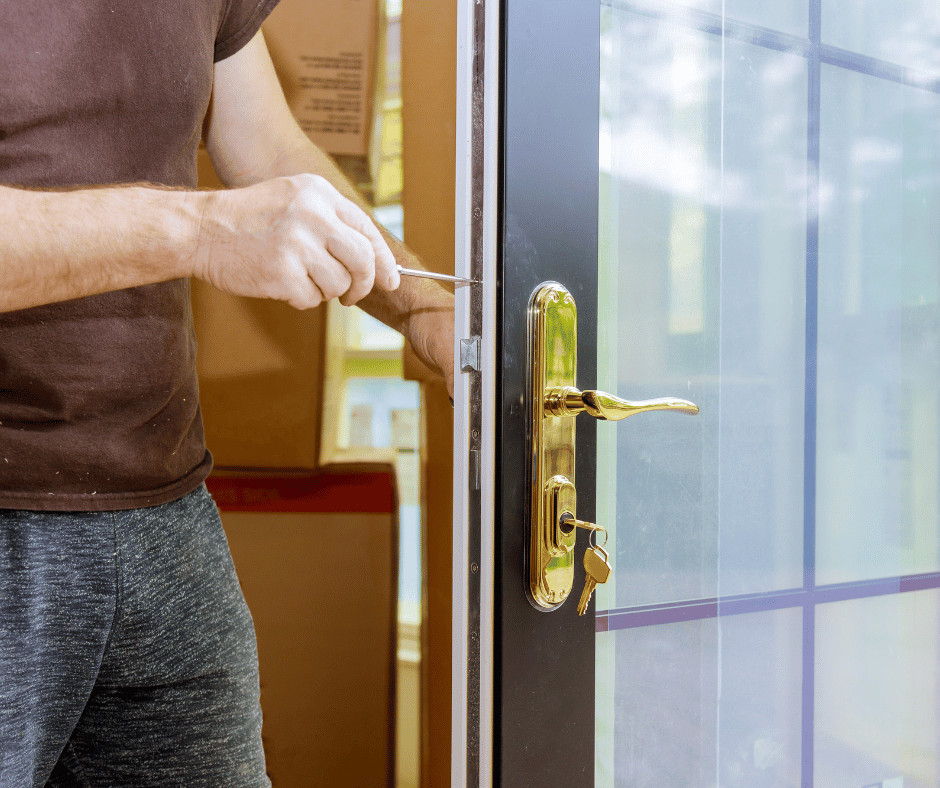
How do I adjust my front door to close tighter?
To adjust your front door to close tighter, you need to focus on the compression adjustment of the hinges. Compression adjustment allows you to bring the door closer to the frame, ensuring a tighter seal. Using an Allen key, adjust the compression screw on each hinge until the door fits snugly against the frame when closed. This should eliminate any gaps and make the door close more securely.
You may also need to check the alignment of the latch plate and adjust it if the door isn’t latching properly. Ensuring the door is correctly aligned and the hinges are properly adjusted will result in a tighter, more secure closure.
How do you adjust a door hinge to close a gap?
To adjust a door hinge to close a gap, you’ll need to focus on the lateral and compression adjustments. If the gap is along the side of the door, a lateral adjustment is necessary. Use an Allen key to adjust the screws on the side of the hinge, moving the door closer to the frame to reduce the gap. If the gap is between the door and the frame when the door is closed, a compression adjustment is required. Tighten the compression screws on the hinges to bring the door closer to the frame, ensuring a tighter fit. By carefully adjusting these settings, you can eliminate gaps and improve the door’s overall fit and function.
How often should I lubricate my composite door hinges?
Composite door hinges should be lubricated every six months to a year, depending on the level of use and environmental conditions. Regular lubrication helps keep the hinges operating smoothly, reduces wear, and prevents squeaking. Use a silicone-based lubricant or a light machine oil, applying a small amount to the hinge pins and moving parts.
After lubricating, open and close the door several times to distribute the lubricant evenly. Regular maintenance like this will prolong the life of the hinges and ensure your door continues to function smoothly.
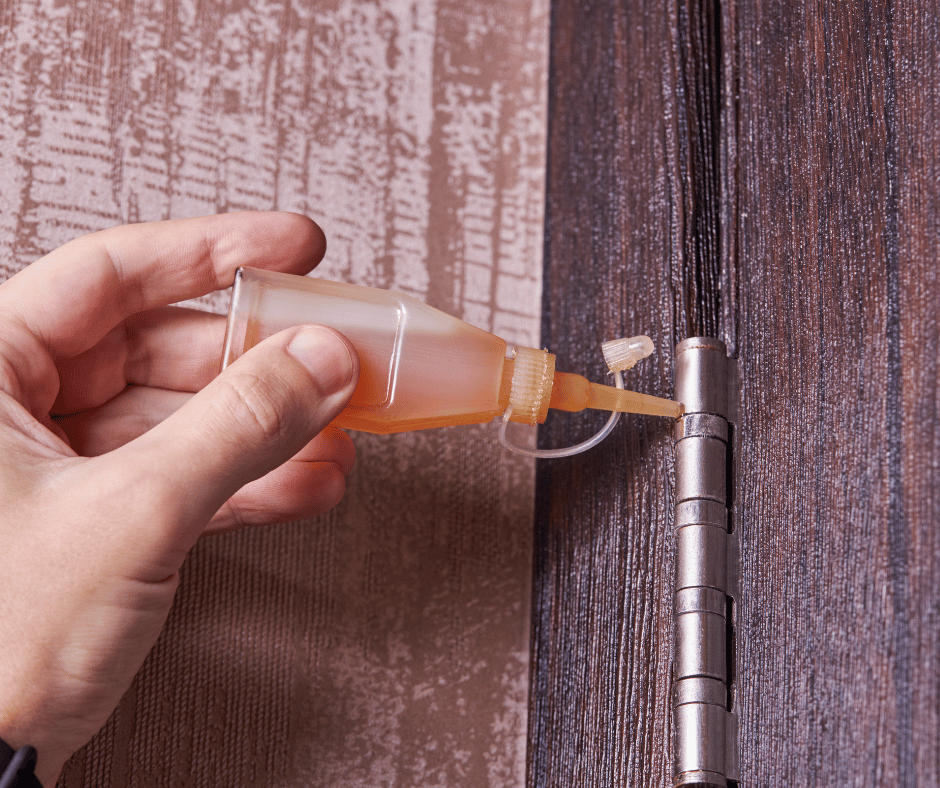
Can I adjust composite door hinges by myself?
Yes, you can adjust composite door hinges by yourself if you’re comfortable with basic DIY tasks. Most composite door hinge adjustments can be done with common tools like an Allen key, screwdriver, and spirit level. By following a step-by-step guide, you can make the necessary adjustments to correct alignment issues, fix sagging doors, or eliminate gaps. However, if you’re unsure about the process or if the door requires significant adjustment, it may be wise to consult a professional to avoid causing any damage to the door or frame.
Why is my composite door draughty?
A draughty composite door is typically the result of improper sealing, which can occur due to a few different reasons. One common cause is poor compression between the door and the frame. If the door isn’t compressed tightly enough, gaps can form, allowing cold air to seep in. This issue can usually be resolved by adjusting the compression settings on the hinges, which will bring the door closer to the frame and create a tighter seal.
Another possible reason for draughts is misalignment of the door within its frame, which can occur if the hinges are not properly adjusted. Additionally, the weatherstripping or seals around the door may be worn or damaged, which would need to be replaced to restore the door’s insulation. Regularly checking and maintaining the door’s alignment and seals can prevent draughts and improve your home’s energy efficiency.
How should you close a composite door?
Closing a composite door correctly is important for maintaining its performance and longevity. To close a composite door properly, you should first ensure that the door is properly aligned within its frame. When closing the door, do so gently but firmly, ensuring that the latch engages with the strike plate without having to force it. If the door doesn’t close easily, it may indicate a misalignment or a problem with the hinges, which might require adjustment. Avoid slamming the door, as this can damage the hinges or the door itself over time. Ensuring that the door closes smoothly and securely will help maintain its weatherproofing and security features, and will reduce the likelihood of wear and tear.
How long do composite doors last?
Composite doors are known for their durability and longevity, often lasting for 30 years or more with proper care and maintenance. The exact lifespan of a composite door can vary depending on factors such as the environmental conditions it’s exposed to, and how well it is maintained.
Celestial composite doors are designed to withstand harsh weather conditions, resist warping, and maintain their appearance over time, making them a long-term investment for your home. Our doors come with a 10 year guarantee for peace of mind. As well as this, regular maintenance, such as cleaning the door, lubricating the hinges, and checking the seals, can help extend the lifespan of your composite door.
Wrapping Up
Properly adjusting your composite door hinges is key to keeping it functioning well for years. Regular maintenance can prevent common problems like sagging, misalignment, or draughts, ensuring your door remains secure and energy-efficient. However, if the issue persists or seems too complex, it’s always a good idea to seek professional help.
At Celestial Windows, we offer a range of durable composite doors, backed by a 10-year guarantee. With our high-quality doors and expert support, you can enjoy a well-fitted, long-lasting solution for your home, whether you’re making adjustments or looking for a new installation.
Get in touch with us today.


